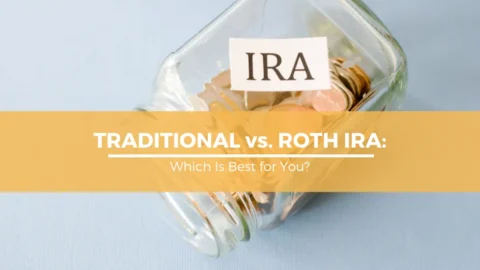Using Trusts in Estate Planning: What is a Trust and How Can It Help You?
What Is a Trust and How Can It Help Your Intergenerational Wealth?
As families go through the estate planning process, there are many foundational building blocks that every estate plan needs, such as a Last Will and Testament, Medical and Financial Power of Attorney, and Advance Directive. However, some individuals wish to have an additional level of customization and control over their estate plan and what happens to their assets beyond their lifetime. For these and other benefits, families may turn to a lesser-known aspect of estate planning – a trust.
What is a Trust?
A trust is a legal structure, created by an estate planning attorney, that allows an individual (also called the grantor) to place their assets into it. The grantor controls how their assets are managed and distributed beyond their lifetime by leaving detailed instructions for the administrator of the trust, also called a trustee.
Typically, the grantor serves as trustee during their lifetime and appoints a successor trustee to manage the trust after their passing. The trustee then follows the instructions left by the grantor to manage the assets within the trust and distribute assets or income to anyone the grantor instructs. These recipients are called beneficiaries.
There are various kinds of trusts for a wide array of goals. Some help wealthy individuals avoid estate taxes, and others help families achieve charitable goals.
Some are designed to protect heirs with special needs. Another type is designed to hold life insurance policies. Whether simple or complex in nature, almost all trusts provide the following benefits:
Probate Avoidance
In general, the assets of a deceased person must be transferred to their heirs through a legal process called probate. During probate, a court verifies the decedent’s last will and testament, establishes an executor, and begins the process of transferring title of assets like real estate, vehicles, investments, and more into the name of the heir.
A Living Trust is formed and takes effect during the grantor’s lifetime. Any assets placed into a Living Trust prior to death bypass probate and are administered by the trustee rather than the executor of the estate. This is generally an easier and less expensive route to get assets to beneficiaries and heirs, particularly in states where probate is extremely cumbersome and costly like California.
It’s important to note that some estate plans implement Testamentary Trusts, that come into existence at the time of the grantor’s death. With few exceptions, assets that fund testamentary trusts are assigned by the Will of the deceased and must still go through the probate process.
Tax Benefits
Trust planning provides certain tax benefits to grantors and their families. In the case of families who expect to be impacted by the estate tax exemption limit ($13.61 million per person in 2024 but getting cut by 50% in 2026 when TCJA sunsets), making gifts to an Irrevocable Trust may make sense. An irrevocable trust is permanent, and assets placed into the trust by the grantor cannot be withdrawn.
By making this gift where the assets cannot be retrieved for personal use by the grantor in the future, the assets are permanently removed from the grantor’s taxable estate and not subject to estate taxes.
Other tax benefits may be realized by the grantor and beneficiaries of a charitable trust such as the Charitable Remainder Trust, where the grantor and/or beneficiaries retain income for a period of time from the assets within the trust. Subsequently, the remainder of the trust goes to charity, but the grantor receives an initial tax deduction for the future charitable gift. There are many such trusts that offer ancillary tax advantages.
Control
Another benefit provided by trusts is the ability of an individual to control the disposition of their assets beyond their lifetime. An individual can tell their trustee how much of the trust’s income or principal should be given to beneficiaries each year. This can be a certain sum or a percentage.
Alternatively, one could stipulate that a beneficiary must reach a certain age or life milestone before receiving funds. Many individuals feel better about their estate plan knowing that their wishes will be followed after their passing.
Family Protection
Another aspect of trusts is that they both protect assets from creditors and keep assets within the family bloodline. For instance, if an individual that inherits assets in trust is subject to a liability event and a court determines that they owe money to a third party, that person cannot be compelled to remove assets from the trust in order to pay creditors.
Alternatively, if that same individual inherited $1 million in cash from their parents outside of a trust, those assets would be available to creditors and may be taken.
Similarly, assets inherited via trust are not separable in divorce proceedings. If an individual inherits funds outside of a trust during marriage, there are many states and circumstances in which those assets may be divided during divorce. The trust structure ensures that the assets stay with your descendants and their progeny.
Privacy
As previously stated, assets that pass to heirs via trust generally avoid probate. As a civil court proceeding, probate is part of the public record.
Wealthy families often want to keep their estate private. They may be concerned about the details of their private finances being exposed during the probate process. Limiting access to these details can help them maintain their privacy. The first and best way achieve that privacy is to pass assets to the next generation via trust.
Flexibility
Trust law offers dramatically more flexibility to an estate plan than a simple will. The trust document can account for a variety of different scenarios and outcomes according to the grantor’s wishes. If the Grantor wishes to preserve the capital of the trust against the big spending habits of a beneficiary, they can limit distributions, yet still provide for emergencies.
There are frequently provisions for HEMS within many trusts, which stands for the Health, Education, Maintenance, and Support of the beneficiary. The HEMS standard is an ascertainable standard in the eyes of the IRS that the trustee can follow to provide for exigencies where necessary. This flexibility is not something generally available with more standard estate planning using only a Last Will and Testament.
The topic of trust utilization is both broad and full of nuance, so it’s critical to utilize the guidance of an advisor when considering your options. If you wish to gain a better understanding of various trust types as well as their costs and benefits or need a referral to one of the qualified estate attorneys our clients have had a good experience with, we encourage you to ask a question via the contact form below.
Need Some Help?
If you’d like some help from one of our CPAs or CERTIFIED FINANCIAL PLANNER (CFP®) advisors regarding this strategy and how it applies to you, the Rhame & Gorrell Wealth Management team is here to help.
Our experienced Wealth Managers facilitate our entire suite of services including financial planning, investment management, tax optimization, estate planning, and more to our valued clients.
Feel free to contact us at (832) 789-1100, [email protected], or click the button below to schedule your complimentary consultation today.
IMPORTANT DISCLOSURES:
Corporate benefits may change at any point in time. Be sure to consult with human resources and review Summary Plan Description(s) before implementing any strategy discussed herein.Rhame & Gorrell Wealth Management, LLC (“RGWM”) is an SEC registered investment adviser with its principal place of business in the State of Texas. Registration as an investment adviser is not an endorsement by securities regulators and does not imply that RGWM has attained a certain level of skill, training, or ability. This material has been prepared for informational purposes only, and is not intended to provide, and should not be relied on for, tax, legal or accounting advice. You should consult your own CPA or tax professional before engaging in any transaction. The effectiveness of any of the strategies described will depend on your individual situation and should not be construed as personalized investment advice. Past performance may not be indicative of future results and does not guarantee future positive returns.
For additional information about RGWM, including fees and services, send for our Firm Disclosure Brochures as set forth on Form ADV Part 2A and Part 3 by contacting the Firm directly. You can also access our Firm Brochures at www.adviserinfo.sec.gov. Please read the disclosure brochures carefully before you invest or send money.













